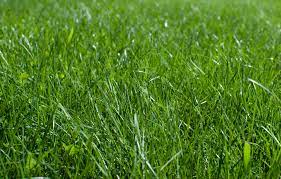 Everything is starting to green up very nicely now, but is your lawn off to a slow start? Perhaps this is the year to renovate your home lawn and get it looking green and lush.
Everything is starting to green up very nicely now, but is your lawn off to a slow start? Perhaps this is the year to renovate your home lawn and get it looking green and lush.
First off, consider if you need to keep your entire lawn area. Of course, kids and pets need a lawn to play in, but cutting back on your turf area can reduce water needs and give you the opportunity to get creative with your landscape. Consider replacing some of your turf area with flower beds where you can plant water wise species that will benefit local pollinators and your wallet!
Renovating your current lawn can involve introducing a new or an improved variety of the same turf species into your existing lawn. You can also introduce a different, similar looking species into your lawn, such as perennial ryegrass into a bluegrass lawn. You can also seed fine fescue into a bluegrass lawn. You don’t want to seed a warm season grass (buffalograss and blue grama) into a cool season grass such as bluegrass.
You might want to consider lawn renovation if your lawn has thinned out, or is looking bare in spots, or if you want to convert to a new species. As far as timing goes, you can seed cool season grasses, such as bluegrass, ryegrass, and fescue, anytime from March through September. Warm season grasses such as buffalograss and blue grama can be seeded April through July.
Once you decide which type of turf species you want to seed, you can either kill the existing grass using a non-selective herbicide, or just overseed the lawn you currently have. If you use an herbicide, be sure to read the label and don’t apply it to any flowering plants (dandelions) that may be visited by pollinators.
Core aeration will help the seed contact the soil and will give you better results. Once you seed, follow up with a light raking to work the seed into the soil. You can apply and starter fertilizer, and be sure to keep the soil moist until the seed sprouts.
There are some things you should avoid doing when renovating your home lawn. Don’t be tempted to spread seed on an unprepared soil surface. Take some time to aerate and prep your soil for better results. Don’t use preemergent herbicides before or after the renovation process, this will inhibit seed growth. Be wary of over fertilizing to make the lawn grow faster, it will hurt you in the long run. Finally, don’t mow your lawn too short, keep it about 2-3 inches long.
Following this guidance will have you on your way to the best lawn on the block!


